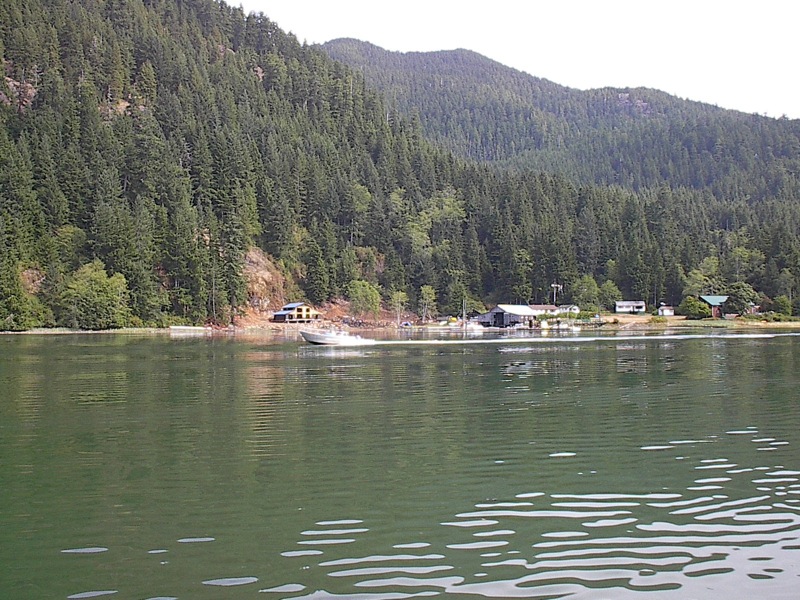Territory and Population
Formerly a prominent nation with extensive territories along the west coast of Vancouver Island, the Toquaht population was decimated by disease and prolonged warfare during the 19th century. Their traditional territories included the western shore of Barkley Sound, Toquart Bay, Mayne Bay, Pipestem Inlet and Macoah Passage.
By the 1900s, the federal government had established six Toquaht reserves that significantly reduced their territory to 196 hectares: Macoah, Deekyakus, Chequis, Chenatha, Du Quah (Dookqua) and Stuart Bay, all located within Barkley Sound. However, the only inhabited reserve is Macoah, meaning “house on the point,” which is located near Macoah Passage. After the implementation of the Maa-nulth Treaty in 2011, the Toquaht Nation regained ownership of 1,489 hectares of traditional territory. (See also Indigenous Peoples: Treaties).
According to the federal government, there are 155 registered members, as of September 2018. The majority (136) live off reserve, mostly in cities along the coast, such as Ucluelet and Port Alberni.
Traditional Life
A coastal people, the Toquaht relied on fishing (mostly salmon, shellfish and sea mammals) and whaling for subsistence. They also hunted deer and elk, and foraged for berries and vegetation.
The Toquaht travelled to and from villages and hunting sites on foot or in dugout cedar canoes throughout the year, according to seasonal and migration patterns. One of the most important summer villages was Du Quah, located in a defensive position at the mouth of Ucluelet Inlet.
Society and Governance
Toquaht society was (and still is) composed of various family groups who are governed by hereditary chiefs (ha’wiih). These chiefs own the rights to certain ceremonies, songs, stories and territories.
The ha’wiih, along with a secondary chief, the Chaa-maa-ta, retain powers in the Toquaht Council. The Council is one of the three governance structures of the Toquaht nation; the other two are the Executive Branch of Council (known as “the Executive”) and the People’s Assembly. The nation is also governed by three elected members of the Council, who serve four-year terms. The Council appoints portfolios to the Executive, including Finance, Resource Harvesting, Chairperson, Community Services, and Lands, Public Works and Environmental Protection. The Council also appoints and advises various committees such as Citizenship and Enrolment, Treaty Implementation, Finance and Economic Development.
The People’s Assembly gives average citizens (known as the muschim) the chance to advise the Council, and invites them to vote on resolutions to bring about change. An assembly is held at least four times a year, as required by the Toquaht Constitution. The People’s Assembly held at Macoah every July (called “Macoah Days”) is a large gathering.
Culture
Historically, the Nuu-chah-nulth have had a strong ceremonial culture, characterised by feasting and entertainment with song, dance, contests and theatricals. (See also Potlatch).
The Nuu-chah-nulth have also been known for their stunning woodwork, including canoes, totem poles, multifamily houses and other products hand-crafted out of fine cedar. (See also Northwest Coast Indigenous Art).
Language
The Toquaht speak a micro-dialect known as Toquaht, which belongs to the Barkley dialect of the Nuu-chah-nulth (Nuučaan̓uɫ) language. The Toquaht language is considered endangered; in 2015, only five people somewhat understood or spoke the language. However, the nation has developed language programs and materials designed to revitalize the language, and by the end of the same year, the nation counted 50 learning speakers. (See also Indigenous Languages in Canada and Nuu-chah-nulth: Language.)
Spirituality and Religion
The Nuu-chah-nulth belief system centres on a Creator being as well as spirits whose powers can be used to bring peace and fortune. The Nuu-chah-nulth believe that all life forms have a spirit, and should therefore be respected and appreciated. Shamans ensured the spiritual health of the people by practising ancient medicines and healing rituals to cure illness and restore balance to the soul. (See also Indigenous People: Religion and Spirituality).
Colonial History
Forced onto reserves by the 1900s, the Toquaht were made to assimilate to white, Christian culture through federal programs and policies such as the Indian Act and residential schools. Toquaht culture has survived in spite of these dark moments in Canadian history.
Contemporary Life
The Toquaht, along with several other Nuu-chah-nulth nations, have signed the Maa-nulth treaty, which has provided them with self-governance since 1 April 2011. As self-governing, the nations have certain powers over citizenship and lawmaking in their traditional territories. The Toquaht now manage their own commercial fishing, sawmill and tourism operations, as well as other development projects.
The Toquaht are part of the Nuu-chah-nulth Tribal Council, an association founded in 1958 that provides various services to approximately 9,500 registered members, including child welfare, education, employment training and other socio-economic programs that support health and development.

 Share on Facebook
Share on Facebook Share on X
Share on X Share by Email
Share by Email Share on Google Classroom
Share on Google Classroom






